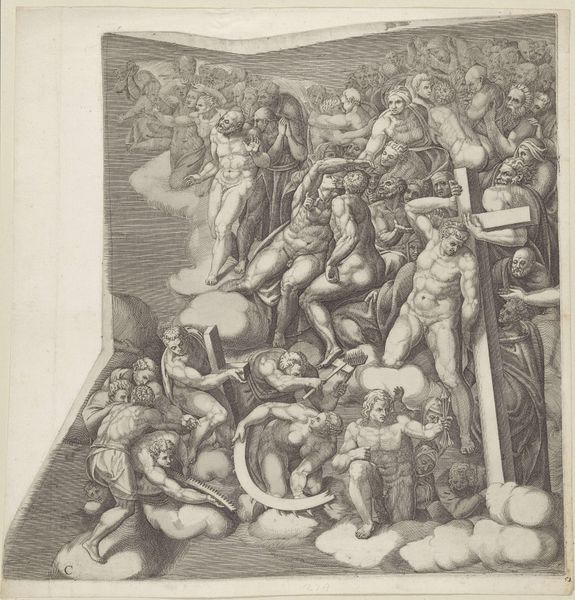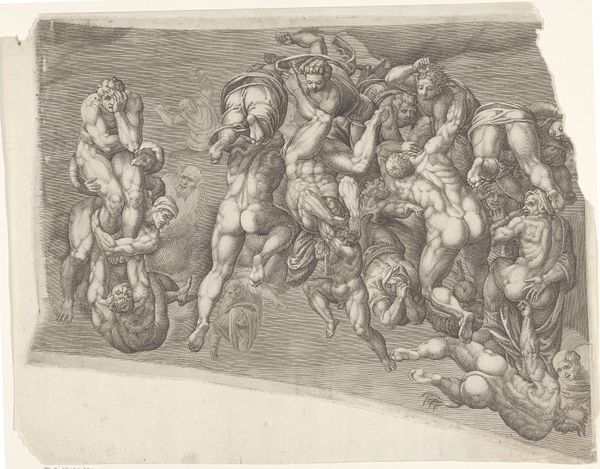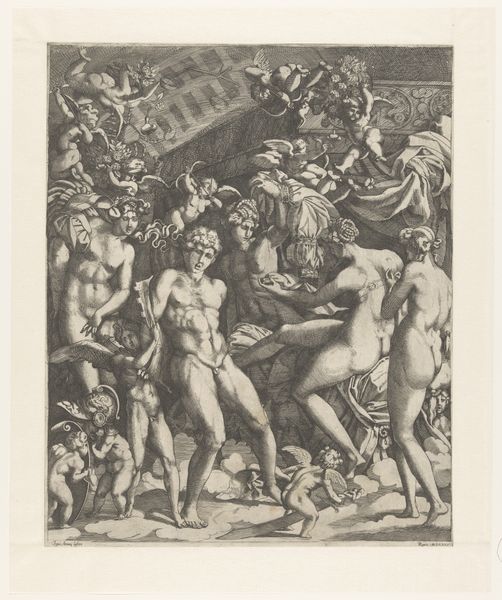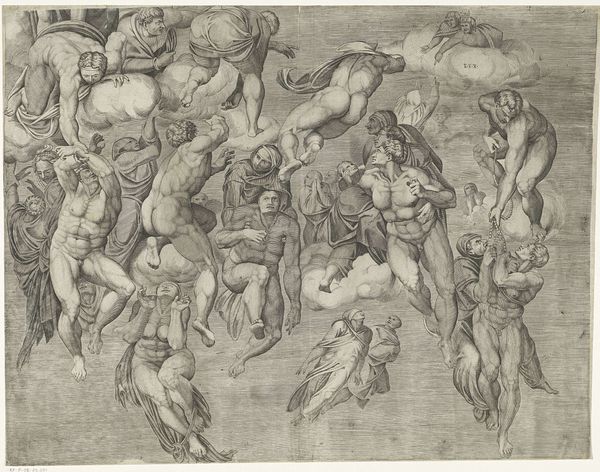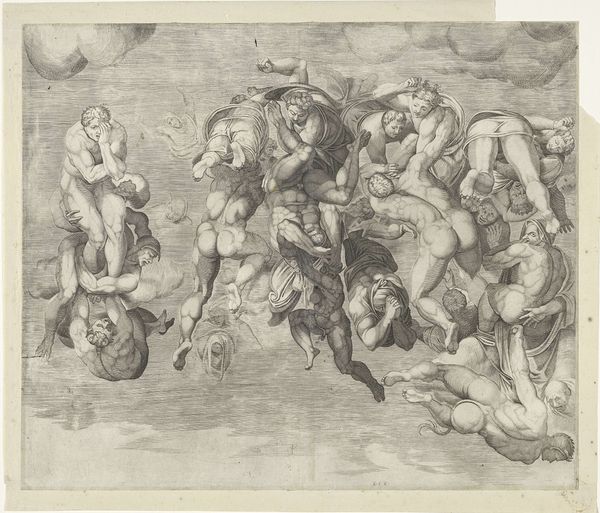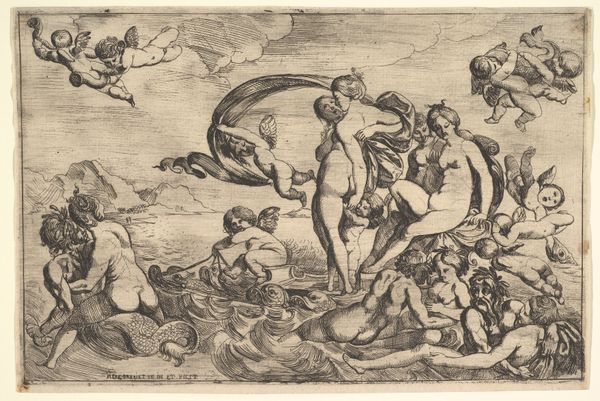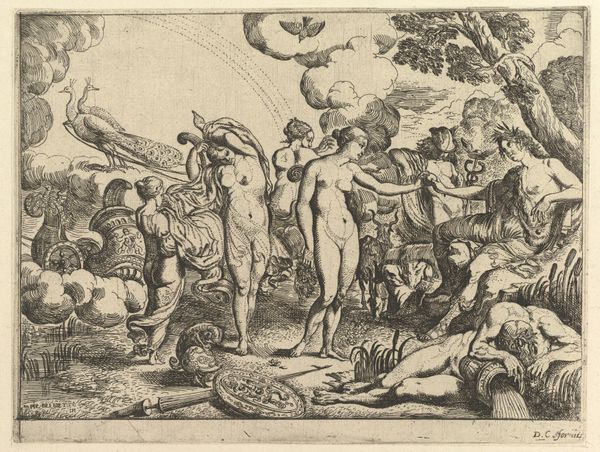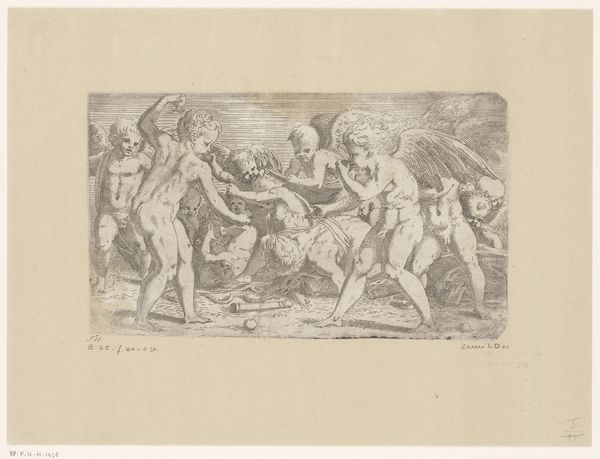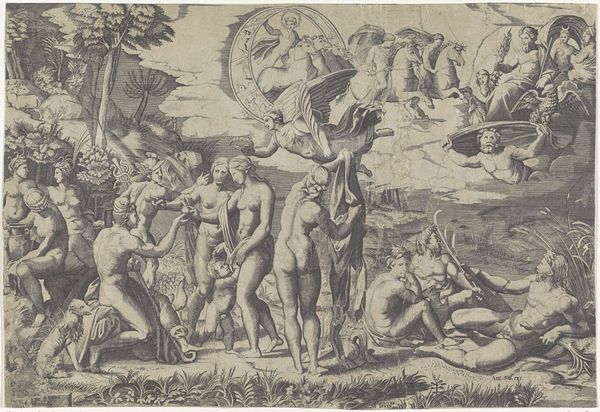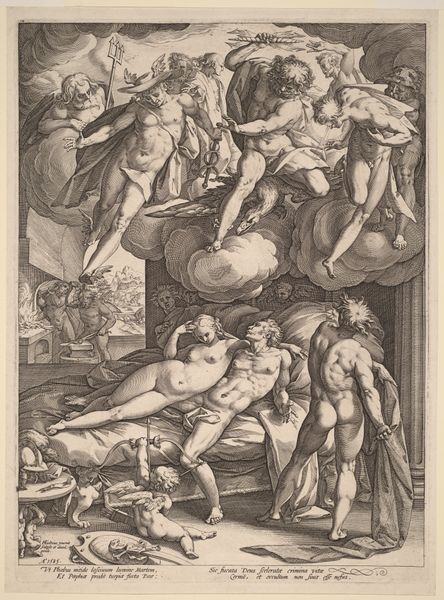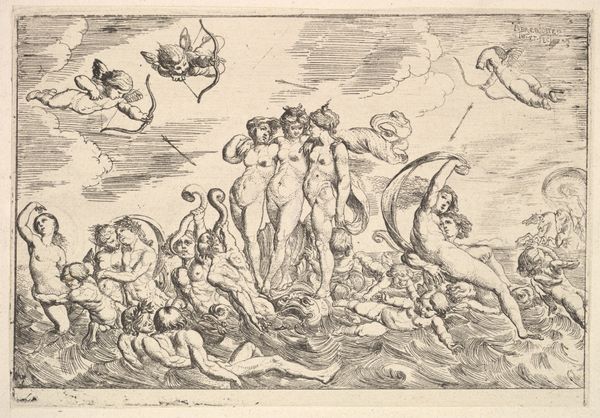
print, engraving
# print
#
mannerism
#
figuration
#
history-painting
#
italian-renaissance
#
engraving
Dimensions: height 435 mm, width 435 mm
Copyright: Rijks Museum: Open Domain
Curator: Let's talk about Giorgio Ghisi's "Het laatste oordeel, blad H," or "The Last Judgement, sheet H" created between 1530 and 1582, now housed in the Rijksmuseum. This engraving provides a potent example of the Italian Renaissance. What's your initial reaction to it? Editor: It's… chaotic, yet controlled? Like a storm cloud of bodies swirling around. The engraving style almost adds to the intensity, creating this sense of being overwhelmed. Curator: Indeed. The Last Judgement, a common theme during this period, presents a pivotal moment when souls are weighed, and destinies are sealed. Ghisi, working in the Mannerist style, really amplifies that drama. Notice how the figures are contorted, muscles flexed. They express intense emotion. Editor: Absolutely. It's that Mannerist distortion that gets you, right? The figures aren’t just floating; they're grappling, pleading, despairing. There’s a real sense of physical struggle embedded in what should be a purely spiritual event. I wonder what he’s trying to say about salvation? Is it a fight? Curator: That's insightful. Mannerism often uses visual exaggeration to convey deeper psychological truths. This particular scene, brimming with bodies rising and falling, points to the universal human drama embedded in the concept of final accountability. Ghisi seems to use symbols to explore this tension. Editor: It feels so crowded! Like even at the end of days, personal space is a myth. It's almost darkly comic, this struggle for the best seat in heaven—or, you know, avoiding the fiery pit. Curator: Yes, a wry, uncomfortable comedy perhaps. Engravings, due to their reproducibility, were often used to disseminate these kinds of moral lessons to a wider audience, providing interpretations that were ripe for discussion. Editor: I guess looking at it this way does make me think about cultural memory and images and how they shape our ideas and concepts. Like these repeated visual tropes echoing for centuries. Curator: Precisely. And that continuity, I find so fascinating. This work stands as both a historical artifact and a resonant exploration of human fate, and the anxieties associated with it. Editor: Agreed. It’s left me considering how images influence belief systems and that's not something I expected from what looks like a historical print.
Comments
No comments
Be the first to comment and join the conversation on the ultimate creative platform.
